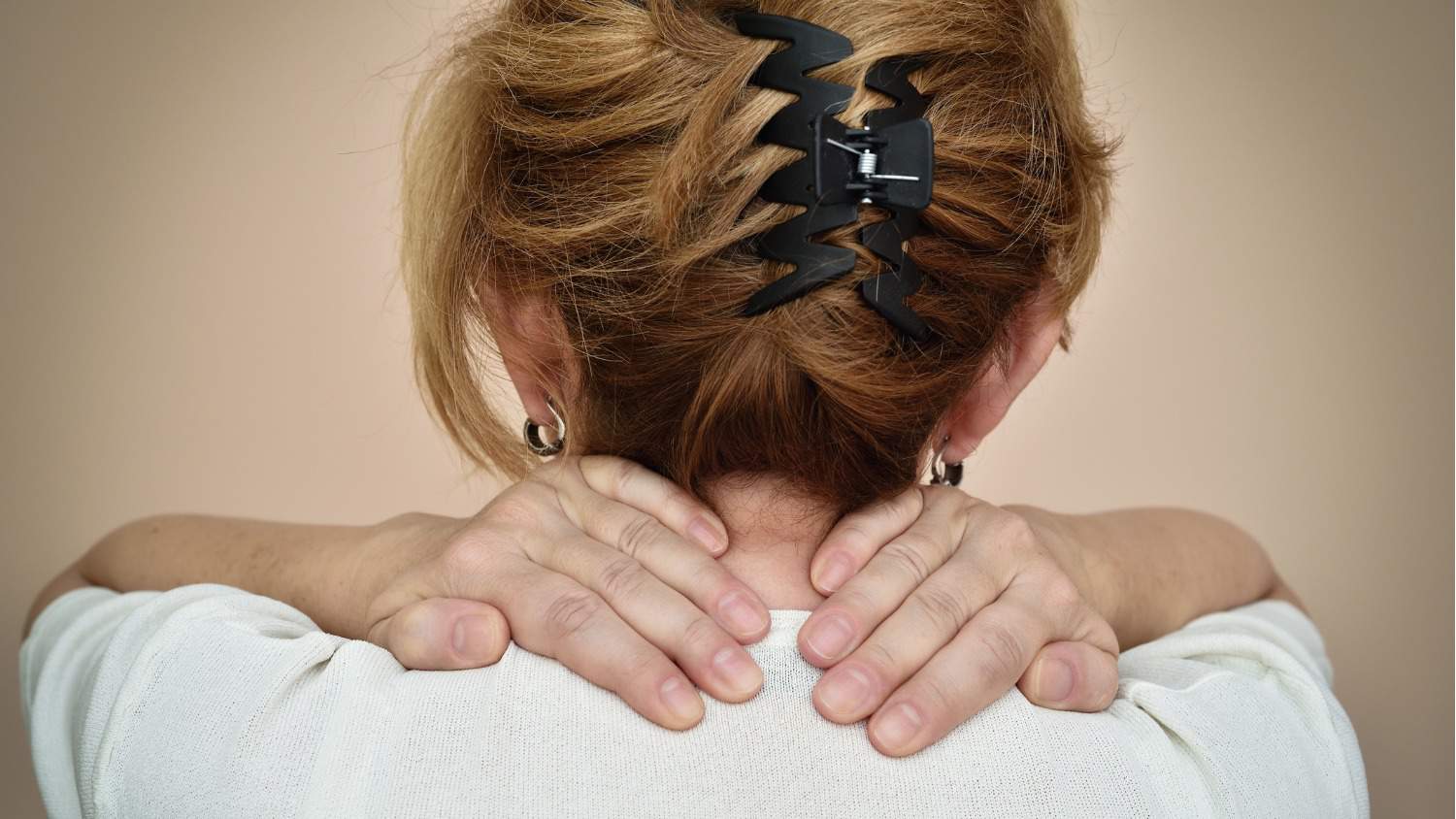
Is It Inevitable That We Will Experience Pain Due to Growing Old?
Thinking back on my years as a youth, I remember seeing my grandparents and then later my older parents “moving slow” and “complaining of pain” and just associated that with aging – they are old and therefore that is why they move slow and have aches and pains.
However, is there a real cause-effect relationship that connects the process of growing old with pain? It is a legitimate question considering that an estimated 100 million Americans are affected by chronic pain.
The quick and easy answer to this question is no, pain is not a normal experience of growing old. Rather, pain, especially chronic pain, is usually due to disease, injury, or physiological and anatomical changes in body tissues due to a lack of sufficient movement/activity, and not simply due to growing older.
When people do sustain an injury or become affected by a disease that for various reasons restricts movement and range of motion, all too often they fail to rehabilitate in a way that would have returned them to their normal pre-injury or pre-condition status. Failure to rehabilitate back can lead to a cascade of tissue deterioration overtime.
However, if they would have properly rehabbed (therapeutic exercises that restore range of motion, muscular strength, proprioceptive sensitivity), the likelihood is good that the tissues would have healed, functional abilities would have been restored, and pain eliminated.
An Environment of Hypokinesis
Consider how many of our modern technologies have contributed to a person’s reduction in movement, a condition known as hypokinesis, or insufficient movement. Data shows that each generation is reporting greater pain levels than the previous generation.
Disorders to the body’s musculoskeletal system is the leading cause of persistent pain and disability among older adults (surpassing heart disease, stroke, lung disease, and injury) and is associated with a variety of conditions that decrease an individual’s quality of life. These conditions include:
- A marked reduction in one’s functionality and the ability to move around and engage in activities of daily living
- An increased risk for falls and the potential for serious injury and all the associated healthcare costs.
- A greater risk of experiencing anxiety, depression, and sleep disturbances.
- Ultimately, a greater likelihood of having to be institutionalized or require the need of daily professional care.
Unfortunately, an estimated 60% of individuals in the United States over the age of 65 suffer from persistent pain, which often goes undertreated. In addition, much of the treatment that is rendered is pharmacological and may not address the underlying reasons for the pain.
Further, treatment strategies may fail to administer known non-pharmacological interventions that have shown in most instances to reduce pain, increase functionality and independence, and improve quality of life.
Finally, treatment plans often neglect to educate the individual about pain, failing to provide new and updated pain management information that has shown to be a powerful factor in the successful treatment of persistent pain.
The Complexity of Pain
While much is known about pain, there is still much that is unknown or not fully understood. To complicate things, pain is not simply a physiological response to some type of harm or injury to body tissues but is a multidimensional experience that can be impacted by the biological, psychological, social, cultural, health status, and emotional state a person may be in, and the interplay of all or some of these factors.
These various factors and associated physiological responses can contribute to increased sensitivity of the nervous system pain processing mechanisms. As a result, their interaction can play a potent role in the development, severity, and continuance of the pain state.
If a person who is in pain generally understands these principles, they would probably be more likely to engage in the non-pharmacological processes that have proven to help reduce or eliminate the pain. Let’s learn about them.
Non-Pharmacological Interventions to Reduce or Eliminate Pain
Attitude, Education and Goal Setting
One of the problems in the efforts to control pain is a person’s perception of pain. If a person has a “fear” of pain it can drive them to avoid or limit activity or anything they perceive will cause or increase their pain. This is known as “fear avoidance.” Their focus and efforts toward controlling the pain can actually produce negative effects, contributing to a stifled quality of life and greater likelihood of more pain and greater pain-related disability.
On the other hand, if a person adopts a more positive approach to pain management by placing a priority on life goals and desires with an optimistic approach and without fear will assuredly see more positive effects. The focus of these individuals is to set goals with challenges relating to what they would do or how they would live their lives if they had no pain.
They engage in activities they want to do, the things that bring them joy. Research shows that this approach is more likely to produce better sleep habits, enhanced mood, increased physical activity and fitness, and a recovery from or diminution of pain. All of which will contribute to a greater quality of life.
Get Good Sleep
Research has revealed that insufficient sleep increases a person’s sensitivity to pain stimuli and also impairs the brain’s natural mechanisms for relieving pain.
- Insufficient sleep produces hyperactivity in the brain’s region that receives and interprets pain signals coming from parts of the body.
- After a night of inadequate sleep, the brain’s ability to release dopamine, which increases a person’s pleasure and reduces pain, is suppressed.
- The brain’s insula, a cortical region structure is involved in the assessment of nociceptive (pain) signals and the reaction to pain by the secretion of natural painkillers, is underactive in conditions of insufficient sleep.
These physiological responses to sleep deprivation can have a significant impact on a person’s next-day pain experience. It also serves to validate sleep as a natural analgesic to help control pain. The good news is that the positive approach to pain management focused on engaging in activities towards a person’s life goals, helps improve sleep duration and quality.
Other aids for greater sleep quality include regular exercise, developing a positive bedtime routine (reduced nighttime distractions like TV or cellphone use, maintaining a cool, dark room, having a quality mattress, etc.), and avoiding alcohol, caffeine, and tobacco. Implementing many or all of these strategies can contribute to a more sound and healthy sleep experience and provide a natural analgesic to help minimize pain.
Engage in Movement/Exercise
The initial response of most people suffering from some type of pain is to reduce or avoid activity and seek rest. However, regular appropriate exercise, introduced in a proper sequential manner, has shown to help reduce pain.
- Rrepeated muscle contraction and relaxation during exercise and movement stimulates the release of body chemicals that relax tissues and relieves pain.
- Exercise has been shown to increase blood concentrations of beta-endorphins, chemicals that works to block the sensation of pain interpretation.
Exercise also helps to reduce musculoskeletal related pain by:
- increasing blood flow to the affected area bringing oxygen and healing nutrients,
- reducing muscle spasm and stiffness, both of which can cause pain, and
- preventing the degradation of articular cartilage that covers the articulating surfaces of bones.
All of these are associated with decreasing pain and increasing functionality.
Pain Reduction Offered by Nerve Stimulation
Sometimes the thought of exercising or even moving when experiencing pain can bring about anxiety. Fortunately, there are devices that are designed to help reduce pain whether you are engaged in exercise or simply doing nothing.
Transcutaneous electrical nerve stimulation (TENS) is a therapeutic modality designed to stimulate sensory nerves to initiate a complex process involving ascending and descending nerve pathways, neurochemical transmitters, and opioid and non-opioid receptors to impede the conduction of pain signals to the spinal cord and on up to the brain’s somatic sensory cortex where they are interpreted as pain.
A TENS unit can help a person to experience less pain while the therapy is being applied, whether that be when engaging in exercise or performing various activities of daily living.
Approaching pain with an attitude of learning what is causing your pain and how to work to control it, as opposed to adopting a fear-avoidance, motion limiting approach, will help drive your goals, establish your priorities, secure better sleep, and lead to the engagement in appropriate exercise, while benefiting from pain reduction/elimination.
Are you suffering from a chronic musculoskeletal pain condition? In which joint or part of your body are you experiencing pain? There are some wonderful, tried and proven therapeutic interventions to address many of the chronic pain conditions experienced by seniors. Hopefully we can explore them together in coming articles.
Tags Fitness Over 60






